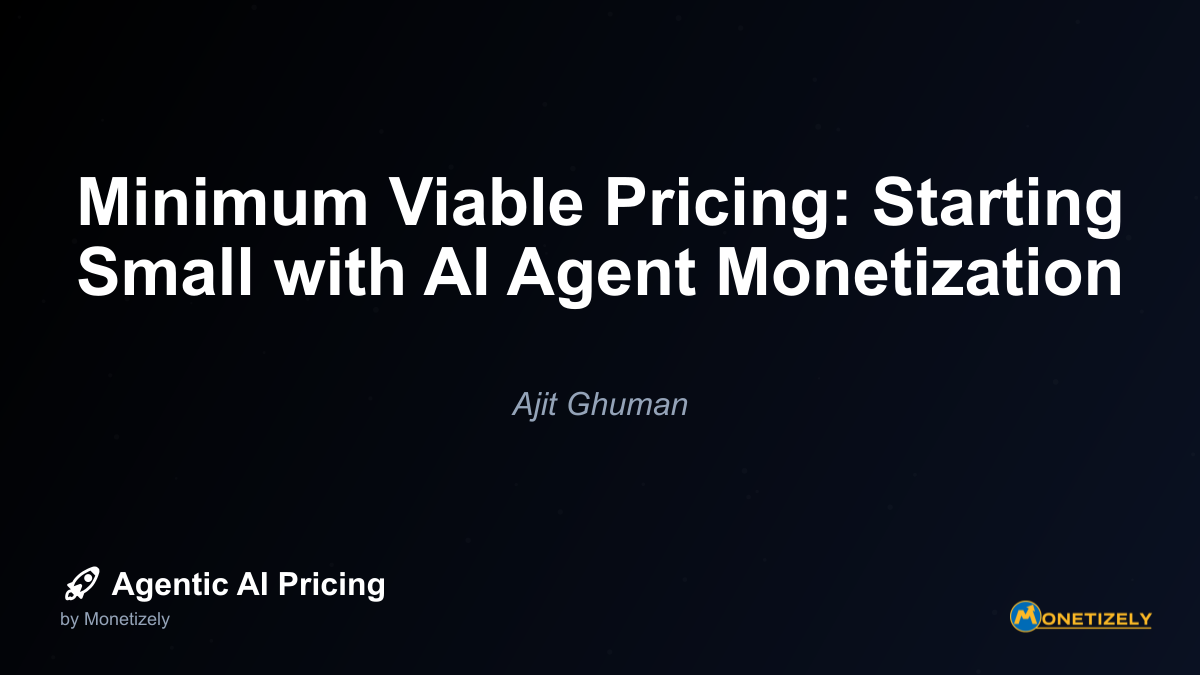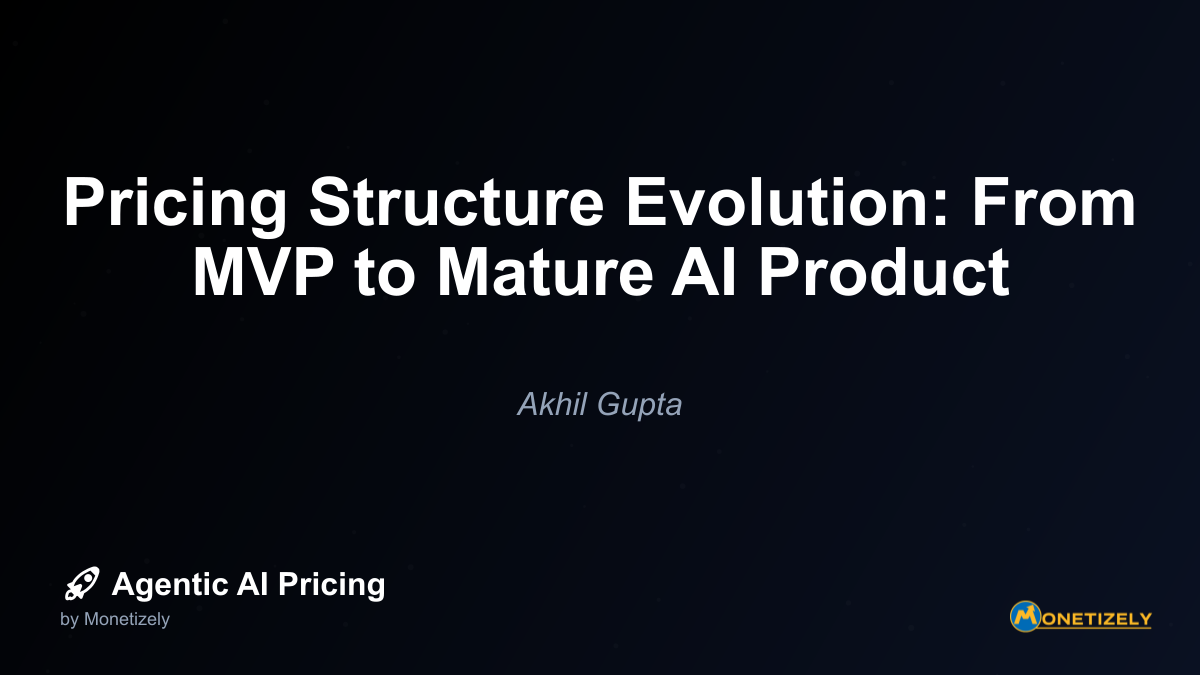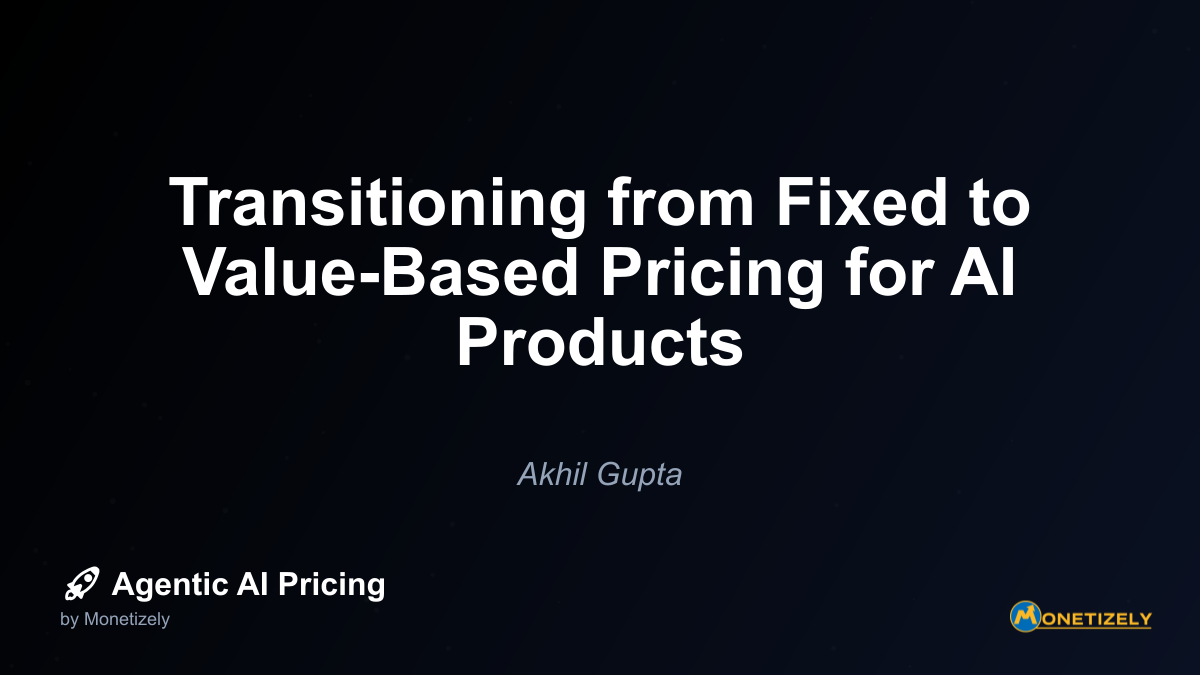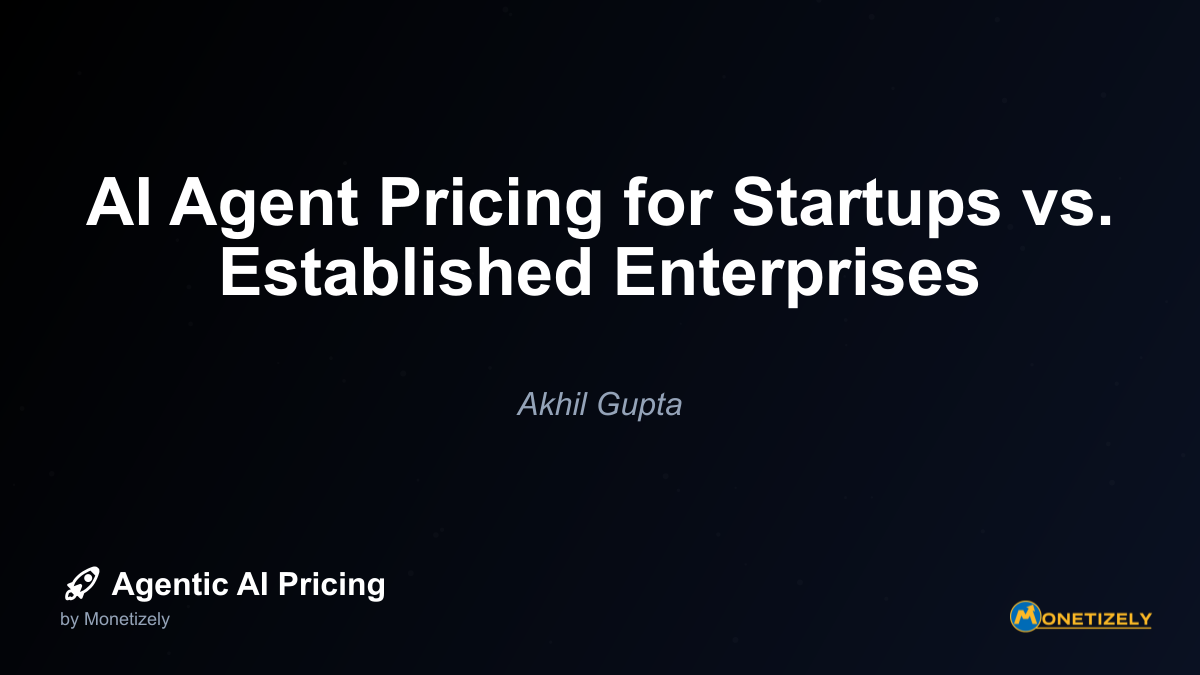· Ajit Ghuman · Strategy · 4 min read
Minimum Viable Pricing: Starting Small with AI Agent Monetization
AI and SaaS Pricing Masterclass
Learn the art of strategic pricing directly from industry experts. Our comprehensive course provides frameworks and methodologies for optimizing your pricing strategy in the evolving AI landscape. Earn a professional certification that can be imported directly to your LinkedIn profile.

For a broader perspective on how AI pricing evolves from early-stage to maturity, our analysis on the evolution of pricing: agentic AI vs traditional software licensing models provides valuable context on industry trends and transformation patterns.
Common Mistakes to Avoid with MVP Pricing
As you implement your Minimum Viable Pricing strategy, watch out for these frequent pitfalls:
1. Underpricing to Avoid Objections
The Mistake: Setting prices artificially low to avoid sales resistance, creating unsustainable unit economics.
The Solution: Test higher price points with smaller segments. Focus on value articulation rather than low prices. Remember that early adopters often have higher willingness to pay for novel solutions.
2. Overcomplicating Early Models
The Mistake: Creating complex multi-dimensional pricing before understanding core value drivers.
The Solution: Start with simpler models that test fundamental assumptions. Add complexity only as you validate basic pricing hypotheses. Focus on learning over optimization.
3. Failing to Segment Properly
The Mistake: Applying one-size-fits-all pricing across different customer segments with varying value perceptions.
The Solution: Identify 2-3 core segments with distinct value profiles. Test different positioning and potentially different pricing for each. Use these insights to refine your segmentation approach.
4. Ignoring Cost Structure
The Mistake: Setting prices based solely on market factors without accounting for your actual costs, especially variable AI costs.
The Solution: Understand your unit economics deeply. Build cost monitoring into your pricing experiments. Set price floors based on contribution margin requirements.
5. Resistance to Change
The Mistake: Becoming attached to initial pricing models despite evidence they should evolve.
The Solution: Establish regular pricing review cycles. Communicate the experimental nature of early pricing to customers. Build technical and communication systems that facilitate changes.
The Roadmap from MVP to Mature Pricing
Your pricing journey doesn’t end with initial MVP implementation. Plan for these evolutionary stages:
Phase 1: Initial Validation (3-6 months)
Focus Areas:
- Validate basic willingness to pay
- Test fundamental value metrics
- Establish baseline conversion rates
- Gather initial customer feedback
Key Metrics:
- Conversion rate by segment
- Average revenue per user
- Customer acquisition cost
- Initial retention indicators
Phase 2: Refinement (6-12 months)
Focus Areas:
- Test price sensitivity more precisely
- Experiment with feature packaging
- Optimize tier structure
- Develop more sophisticated value metrics
Key Metrics:
- Price elasticity by segment
- Feature utilization across tiers
- Upgrade/downgrade patterns
- Expansion revenue rate
Phase 3: Scaling (12-24 months)
Focus Areas:
- Develop segment-specific pricing
- Create enterprise offerings
- Implement value-based components
- Build systematic price optimization
Key Metrics:
- Lifetime value to CAC ratio
- Net revenue retention
- Pricing efficiency (revenue/theoretical maximum)
- Win rates against competitors
Phase 4: Maturity (24+ months)
Focus Areas:
- Dynamic/personalized pricing capabilities
- Predictive pricing models
- AI-driven price optimization
- Ecosystem monetization strategies
Key Metrics:
- Price realization (actual vs. list price)
- Monetization coverage (% of value captured)
- Pricing algorithm performance
- Cross-product adoption
Conclusion: Starting the Pricing Journey
Minimum Viable Pricing isn’t just a tactical approach to early monetization – it’s a strategic framework for building a sustainable AI business. By starting with intentionally simple models focused on learning, you create the foundation for sophisticated pricing that accurately reflects your value and maximizes your market opportunity.
Remember these key principles as you begin:
Start earlier than feels comfortable: The best time to begin pricing experiments is when your product delivers its core value, not when it’s “complete.”
Prioritize learning over optimization: Your initial goal isn’t perfect pricing but rather developing the insights that will inform great pricing.
Communicate transparently: Be open with early customers about your pricing evolution and the value exchange you’re creating.
Build with flexibility in mind: Choose systems and processes that can adapt as your pricing model matures.
Connect pricing to product development: Use pricing insights to inform your product roadmap, ensuring you build features customers will pay for.
For AI agents specifically, early pricing experimentation provides invaluable data about how customers perceive and value artificial intelligence. This understanding becomes your competitive advantage as the market matures and pricing sophistication becomes a key differentiator.
The most successful AI companies don’t view pricing as a necessary evil or an afterthought – they recognize it as a strategic capability that evolves alongside their product. Minimum Viable Pricing gives you the framework to begin that evolution from day one, setting you on the path to sustainable growth and market leadership.
Co-Founder & CEO
Ajit is the author of Price To Scale, a top book on SaaS Pricing and is the Founder of Monetizely. Ajit has led and worked in pricing and product marketing at firms like Twilio, Narvar and Medallia. His work has been featured in Forbes and VentureBeat. Ajit regularly consults with software companies from Seed stage to post-IPO on pricing strategy. Ajit is also a highly-rated co-instructor for 'The Art of SaaS Pricing and Monetization' on Maven.
Pricing Strategy Audit
Let our experts analyze your current pricing strategy and identify opportunities for improvement. Our data-driven assessment will help you unlock untapped revenue potential and optimize your AI pricing approach.




